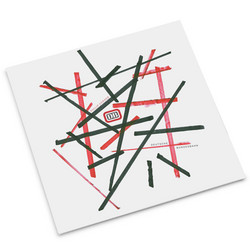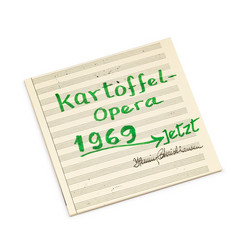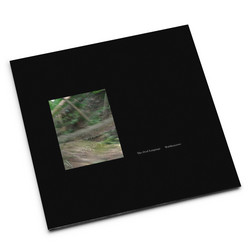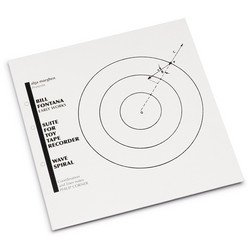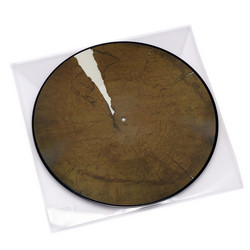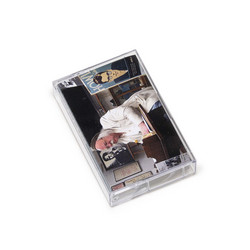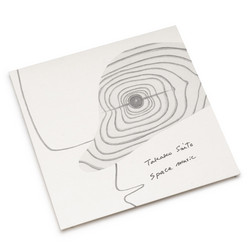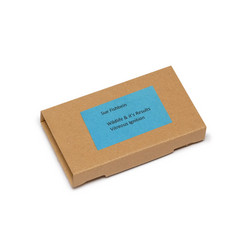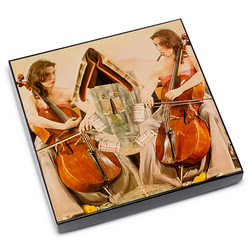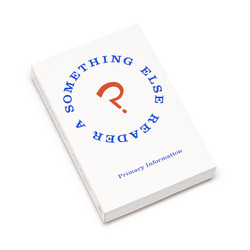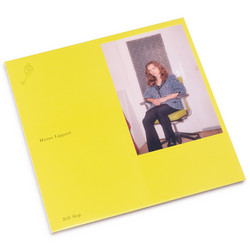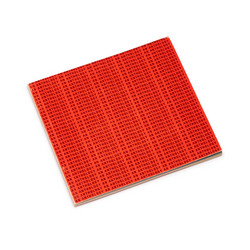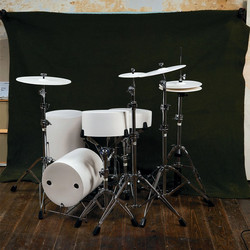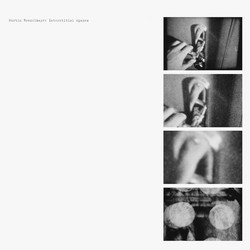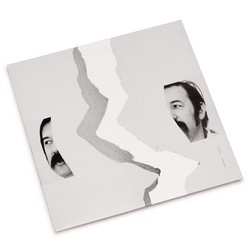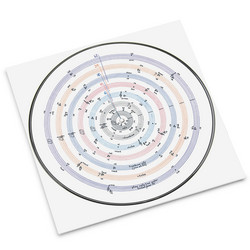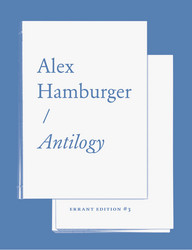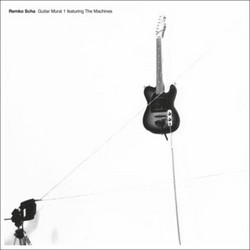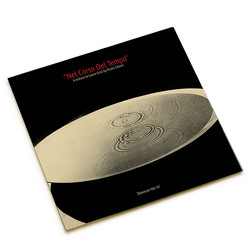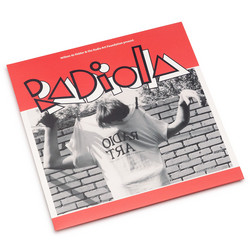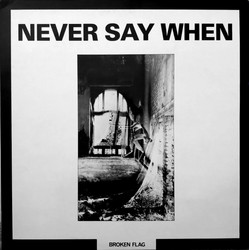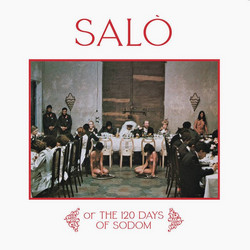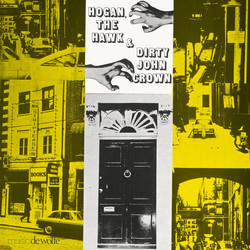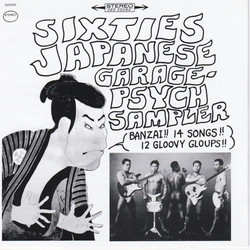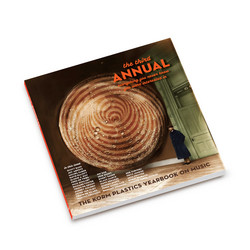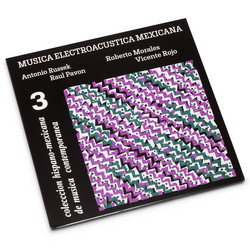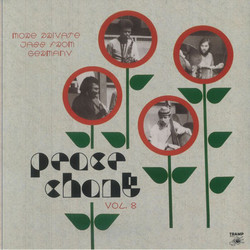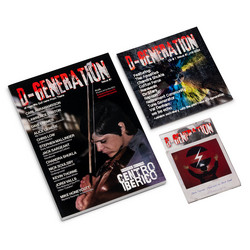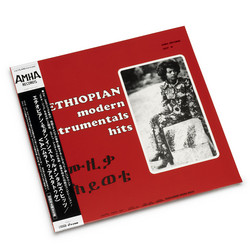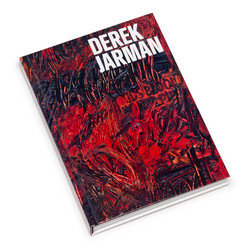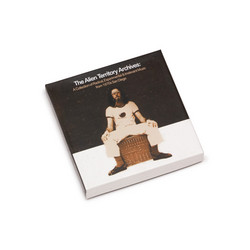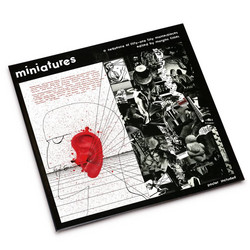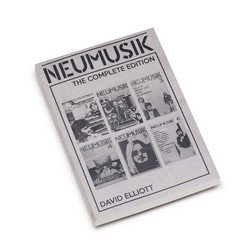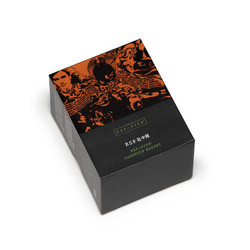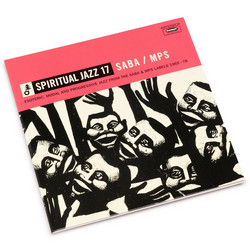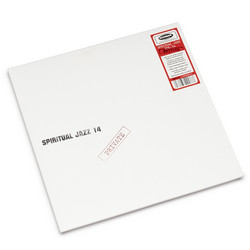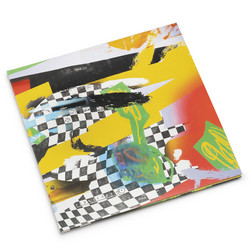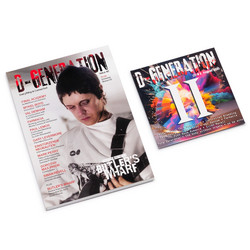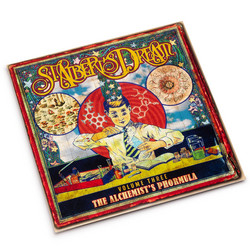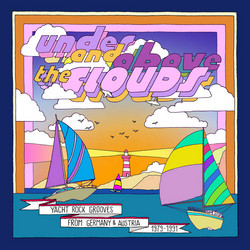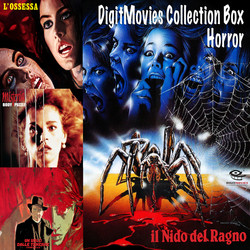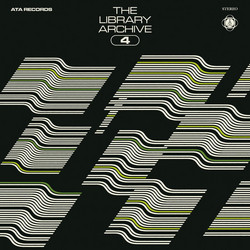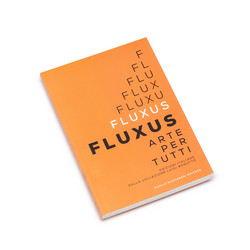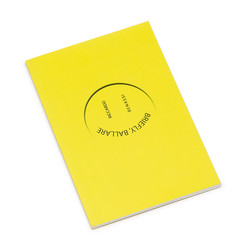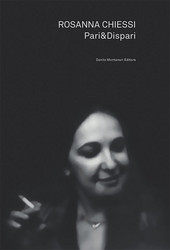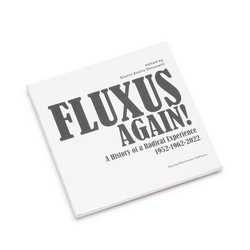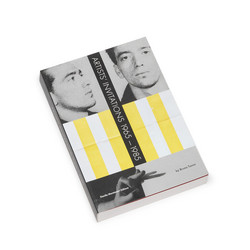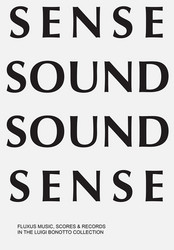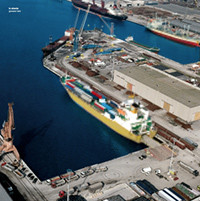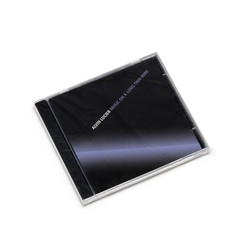Various
Sense Sound / Sound Sense (Book, expanded edition)
** Expanded and revised edition, published on the occasion of the Whitechapel Gallery exhibition 2019-2020 ** "Keeping the rebellious nature of its wicked subject intact, Sense Sound Sound Sense nevertheless provides an impeccably researched, crystal-clear narrative of Fluxus's true revolutionary spirit." The Wire)
Truly necessary catalogue accompanying an extensive exhibition dedicated to art works and musical scores and their relationship with Fluxus, an interdisciplinary movement of international artists, poets, composers and designers who experimented with fusing art and music in the 1960s and 1970s. The catalogue, published on the occasion of an exhibition curated by Patrizio Peterlini and Walter Rovere, delves deeply into this aspect of the Fluxus network. Rife with illustrations, the materials of the collection, as well as the movement and its history, are analysed in scholarly essays by Anna Cestelli Guidi, Alison Knowles, and the curators.
The question of the notation of the new performative methodology and the new music certainly does not only involve Fluxus, Zaj and all the experimentation that arose as a result of John Cage‘s teaching. In fact, it began much earlier and spread, accompanied by various diatribes, through much of the last century. However, Fluxus had the distinctive feature of giving primary importance to musical production, presenting all its public events in a “concert” format - These were concerts, however, that systematically demolished every accepted notion of form and content in music, targeting outdated listening conventions and cultural values of the classical tradition, as well as the “scientific” and intellectualised pretensions of the more advanced European contemporary classical experiences. More precisely, the movement challenged preconceived notions about the nature and boundaries of art, and its artificial division into distinct categories: not surprisingly, the term Intermedia was coined to define the unique fusions of poetry, conceptual art, music, theatre, sculpture and performance presented by numerous Fluxus “events”.

.
Scores such as Drip Music by George Brecht (“A source of water and an empty vessel are arranged so that the water falls into the vessel”), the Disappearing Music for Face by Mieko Shiomi (“Change gradually from a smile to no smile”), the poetic suggestions of Yoko Ono (“Listen to the sound of the earth turning”), or the instructions given by Ben Patterson on the various ways to produce sounds with pieces of paper, became, once published at low cost, an invitation to the readers to “perform” them themselves, and to discover that the aesthetic experience does not require any specialist training, and can spring from any banal everyday action.
In 1969 John Cage, in collaboration with Fluxus artist Alison Knowles, published Notations, a comprehensive anthology of the innovations brought by international experimental music to the functions and methods of notation (consisting of a large collection of graphic scores by 269 composers from the Foundation for Contemporary Performance Art). This has been taken as the starting point for the project Sense Sound / Sound Sense.
It is widely known that Fluxus was strongly influenced by the lessons that John Cage gave at the New School for Social Research in New York between 1956 and 1960. In addition to composers such as Toshi Ichiyanagi (who was studying at the Julliard School of Music in those years), the participants in the courses included a large number of artists with a background in painting but no formal musical training (such as Allan Kaprow, George Brecht, Al Hansen, George Segal and Robert Watts), or poets like Jackson Mac Low, as well as Dick Higgins, expanded cinema pionieer Robert Whitman and others.
Cage’s radical ideas about the indeterminacy of performance, about composition understood as the creation of a process instead of an object, and about a notation that did not necessarily have to refer to sounds but could be applied to any action, had a strong influence in bringing the visual and sound aspects of their work onto the same level. It was during Cage’s courses that Kaprow took the step from Environments to Happenings, and that Hansen and Brecht created some of their famous works such as Alice Denham in 48 Seconds, Candle Piece for Radio and Time-Table Music.
It was also at the New School, but after Richard Maxfield had taken over from Cage as instructor, that George Maciunas met La Monte Young, who had been organizing a series of concerts in Yoko Ono’s loft since December 1960.
,
The first events presented by Maciunas in 1961 at the AG Gallery in New York were organized under the name Musica Antiqua et Nova. From the following year onwards he began to work out an ambitious world tour of the Festum Fluxorum Fluxus; the first of these events, at the Städtische Museum in Wiesbaden in September 1962, has been suggested to be the official start of the group’s activity. Among those who participated at the festival were George Maciunas, Nam June Paik, Emmett Williams, Dick Higgins, Wolf Vostell, Alison Knowles, Ben Patterson, Robert Filliou and Frederic Rzewski, who not only performed their own compositions but also works by Cage, Philip Corner, Takehisa Kosugi, Giuseppe Chiari, Sylvano Bussotti, Terry Riley, Yoko Ono, Toshi Ichiyanagi, Robert Watts, George Brecht, Jackson MacLow and La Monte Young.
In the same period (1964), again inspired by what they had learned from John Cage’s teaching, the Zaj group was formed in Madrid, made up of Jose Luis Castillejo, Ramires Cortés, Juan Hidalgo, Walter Marchetti, Tomás Marco, Eugenio de Vicente and later Esther Ferrer. For this group too, the publication of the scores, whether musical or performative (although these two aspects often merged together too), become central and programmatic.
In parallel, the focus on music and sound led many artists to become interested in producing discs. So in addition to recording “classical” music compositions, there was a boom in a whole range of experiences linked to documentation of the performances and happenings.
Many of these transcended mere documentation. Vinyl records and sleeves became a medium for new experimentation in parallel with the evolutions affecting the book medium. This led to the creation of what may be called artists’ discs.
Knizak and Køpcke, for example, carried out experiments altering discs with glue, scratches, scorch marks etc., to produce object-sculptures with a unique sound, while Vautier sold discs to be bought at random with alternative instructions for use, and Paik made recordings of a 78 rpm disc of Schoenberg played at 16 rpm.
Established in the early 1970s, the Bonotto Collection is the largest collection of Fluxus documents in Italy. Containing over 15,000 works, it stems from the connections made by textile merchant and patron Luigi Bonotto with Fluxus artists, who often created works exclusively for him, or gave him their works and documentation directly.
The exhibition and the accompanying book thus display never-previously seen or rarely reproduced arworks, scores, editions and records by Eric Andersen, George Brecht, John Cage, Giuseppe Chiari, Philip Corner, José Cortés, A. M. Fine, Esther Ferrer, Juan Hidalgo, Dick Higgins, Robert Filliou, Toshi Ichiyanagi, Joe Jones, Milan Knizak, Takehisa Kosugi, György Ligeti, George Maciunas, Jackson Mac Low, Walter Marchetti, Charlotte Moorman, Yoko Ono, Nam June Paik, Ben Patterson, Terry Riley, Paul Sharits, Mieko Shiomi, Takako Saito, Gianni-Emilio Simonetti, Ben Vautier, Wolf Vostell, Yoshimasa Wada, La Monte Young and others.
